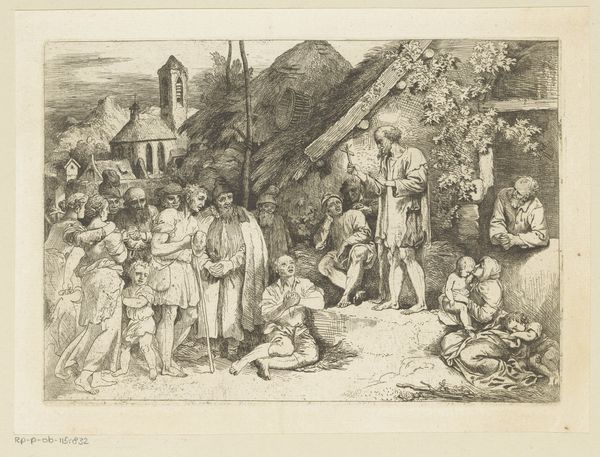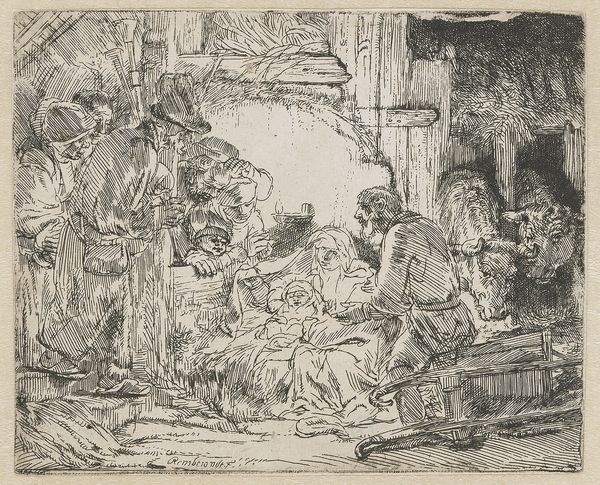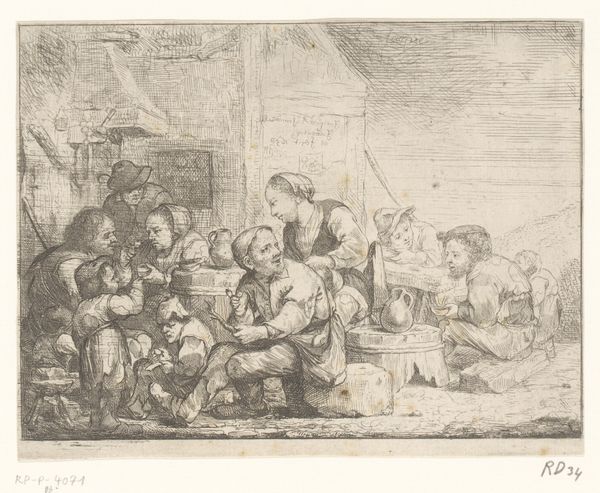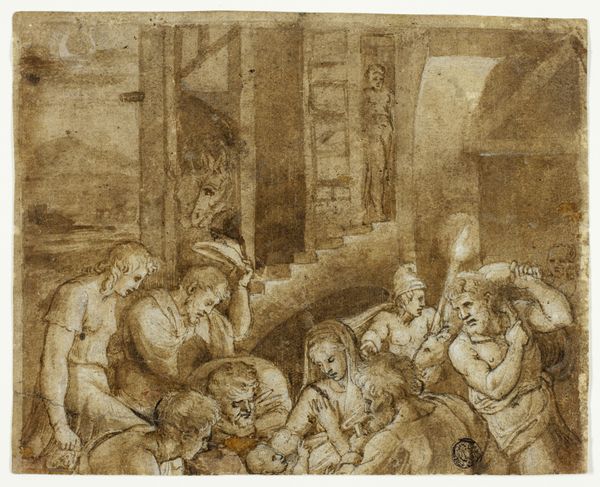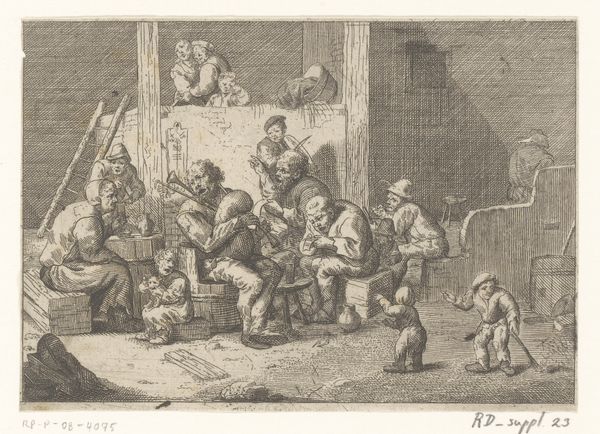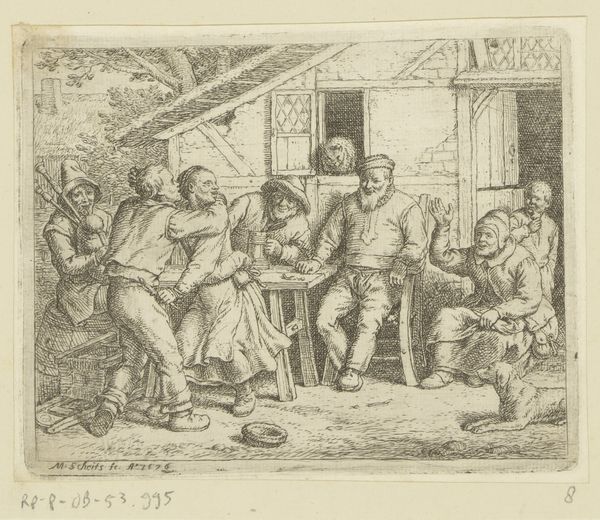
drawing, etching, ink, engraving
#
drawing
#
ink drawing
#
narrative-art
#
baroque
#
pen sketch
#
etching
#
figuration
#
ink
#
genre-painting
#
history-painting
#
engraving
Dimensions: height 187 mm, width 269 mm
Copyright: Rijks Museum: Open Domain
Curator: Editor: Here we have Christian Wilhelm Ernst Dietrich’s “Adoration of the Shepherds” from 1740. It's rendered in ink using etching and engraving techniques, so lots of labor involved in its production. I am fascinated by the details conveyed by this choice of media, from the thatched roof to the clothes and tools. What stands out to you when you look at this work? Curator: The subject, a scene of humble devotion, stands in contrast to the skilled means of production using etching and engraving, processes accessible only to professional workshops. The economic disparity of 18th-century Europe are clear in this depiction of common people receiving the divine infant, yet we're looking at a manufactured, mass-produced, devotional image sold for profit, even though it tries to portray an unvarnished and supposedly natural world. The very tools used to create this print – the metal plates, the acids, the printing press – all point to systems of labour and economic exchange. How does this tension affect your perception of the work? Editor: It’s striking. Knowing it was made for profit makes me question the genuineness of the portrayed humility. I almost see it now as a commentary on how even sincere faith can become a commodity, manufactured and consumed. Curator: Exactly! Consider also the role of the artist as a mediator. Dietrich transforms a sacred narrative into a tangible object, utilizing his skill and workshop resources to address an audience who would not otherwise have access to this religious iconography, beyond a small wooden cross for example. His knowledge is also labor, but this expertise reinforces social hierarchies and the art market itself. Editor: So, it’s not just a religious scene; it’s also about social commentary? Curator: Precisely. By examining the production and materials, we see how "Adoration of the Shepherds" becomes a product reflecting the era’s economic and social realities, turning piety into material for profit. The image’s power now shifts away from the devotional towards something highlighting class structures and commodity production. Editor: I never thought about religious art that way before. I’ll certainly look at art differently now, not just what it depicts but how and why it was made.
Comments
No comments
Be the first to comment and join the conversation on the ultimate creative platform.


